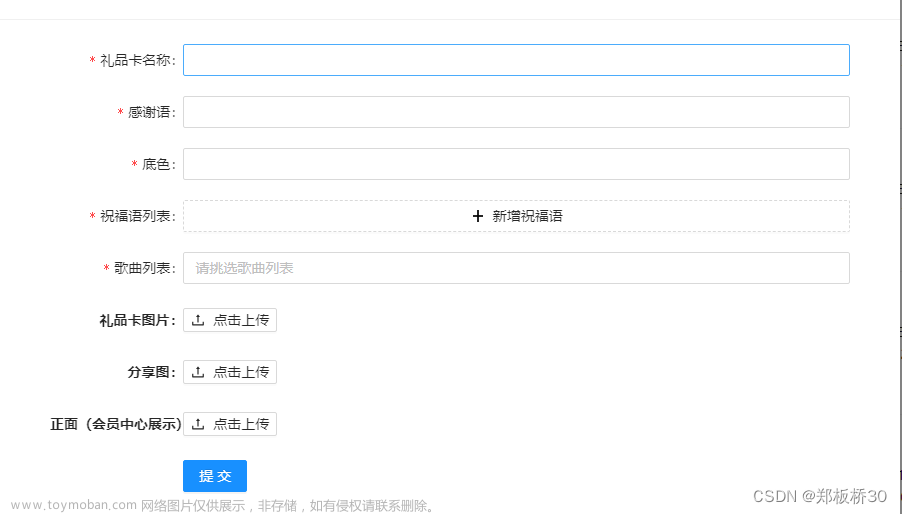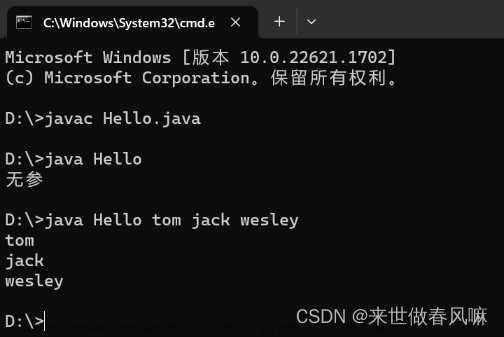前言:
- React组件中默认封装了很多属性,有的是提供给开发者操作的,其中有三个属性非常重要:state、props、refs。通过这三大核心属性的使用,我们能够实现对组件的状态进行更新。
一,组件的基本理解和使用
1. 函数组件
<script type="text/babel">
function MyComponent() {
return <h2>我是函数定义的组件(适用于简单组件的定义)</h2>
}
ReactDOM.render(<MyComponent />, document.getElementById('test'))
</script>
函数组件的渲染过程
1.React解析了组件标签,找到了对应的组件
2.发现这个组件是一个函数定义的,随后调用该函数,生成一个虚拟dom
3.最后将虚拟dom转化成为真实dom,呈现在页面中
2. 类式组件
<script type="text/babel">
class MyComponent extends React.Component {
render() {
return <h2>我是类定义的组件适用于复杂数据类型</h2>
}
}
ReactDOM.render(<MyComponent />, document.getElementById('test'))
</script>
类式组件的渲染过程
1.React解析了组件标签,找到了对应的组件
2.发现这个组件是一个类定义的,随后new出来一个实例对象,并通过该实例调用原型上的render方法
3.将render()返回的内容生成一个虚拟dom
4.最后将虚拟dom转化成为真实dom,呈现在页面中
3.组件的注意事项
组件名必须首字母大写
虚拟DOM元素只能有一个根元素
虚拟DOM元素必须有结束标签
二,组件的三大核心属性
1.state
-
state是一个对象,它包含组件的数据状态,当状态变化时,会触发视图的更新。你可以理解它的作用跟Vue中的data对象类似。
<script type="text/babel">
class Weather extends React.Component {
constructor() {
super()
this.state = {
isHot: false,
wind: '微风'
}
this.chang = this.chang.bind(this)
}
render() {
let { isHot, wind } = this.state
return <h2 onClick={this.chang}>今天的天气很 {isHot ? "炎热" : "凉爽"},{wind}</h2>
}hang() {
console.log(this)
this.setState({
isHot: !this.state.isHot
})
}
}
ReactDOM.render(<Weather />, document.getElementById('test'))
</script>
1. 注意事项
1.组件中render方法中的this为组件实例对象
2.组件自定义的方法中this为undefined,如何解决?
1.强制绑定this: 通过函数对象的bind()
2.箭头函数
3.状态数据,不能直接修改或更
2.简写方式
<script type="text/babel">
class Weather extends React.Component {
state = {
isHot: false,
wind: '微风'
}
render() {
let { isHot, wind } = this.state
return <h2 onClick={this.chang}>今天的天气很 {isHot ? "炎热" : "凉爽"},{wind}</h2>
}
chang = ()=>{
this.setState({
isHot: !this.state.isHot//这里的修改是一种合并,对比属性的变化,如果有赋新值,没有则跳过
})
}
}
ReactDOM.render(<Weather />, document.getElementById('test'))
let a = new Weather()
</script>
设置状态:setState
setState(object nextState[, function callback])
不能在组件内部通过 this.state 修改状态,因为该状态会在调用 setState() 后被替换。
setState() 并不会立即改变 this.state,而是创建一个即将处理的 state。setState() 并不一定是同步的,为了提升性能 React 会批量执行 state 和 DOM 渲染。
setState() 总是会触发一次组件重绘,除非在 shouldComponentUpdate() 中实现了一些条件渲染逻辑。
2.props
-
React中组件通过props属性接收外部传入的数据,这点 Vue 跟 React 是一致的 - react 中说的单向数据流值说的就是 props,根据这一特点它还有一个作用:
组件之间的通信。 - props 本身是
不可变的,但是有一种情形它貌似可变,即是将父组件的 state作为子组件的 props,当父组件的 state 改变,子组件的 props 也跟着改变,其实它仍旧遵循了这一定律:props 是不可更改的。
<script type="text/babel">
class MyComponent extends React.Component {
render() {
return (
<ul>
<li>{this.props.name}</li>
<li>{this.props.age}</li>
</ul>
);
}
}
ReactDOM.render(
<MyComponent name="Bob" age="18" />,
document.getElementById("test")
);
</script>
props的特点:
- 每个组件对象都会有props(properties的简写)属性
- 组件标签的所有属性都保存在props中
- 内部读取某个属性值:this.props.propertyName
- 作用:通过标签属性从组件外 向组件内传递数据(只读 read only)
- 对props中的属性值进行类型限制和必要性限制
对props进行限制
- 引入 prop-type 库,这就是专门用于限制 props 属性的一个库
- 导入 prop-type 库,到当前页面
- 根据 Person.propTypes = {} 进行限制
class MyComponent extends React.Component {
render() {
return (
<ul>
<li>{this.props.name}</li>
<li>{this.props.age}</li>
</ul>
);
}
}
// 校验类型
MyComponent.propTypes = {
name: PropTypes.string, // 这里的 PropTypes 变量是全局挂载的
age: PropTypes.number,
};
ReactDOM.render(
<MyComponent name="Bob" age={18} />,
document.getElementById("test")
);
props的简写
<script type="text/babel">
class Weather extends React.Component {
constructor(props) {//是否接受,取决于是否使用外部数据
super(props)//只能上面接受了props,super()就去传递,否则后续的使用,可能就会出现问题
}
static propTypes = {
name: PropTypes.string.isRequired,//限制name为字符串类型,必填
// age: PropTypes.number,
sex: PropTypes.string,
speak: PropTypes.func
}
static defaultProps = {
sex: '男',
}
render() {
let { name, age, sex } = this.props
return (
<ul>
<li>姓名:{name}</li>
<li>性别:{sex}</li>
<li>年龄:{age + 1}</li>
</ul>
)
}
}
ReactDOM.render(<Weather name="tom" age={26} sex="女" />, document.getElementById('test'))
</script>
函数组件使用props
<script type="text/babel">
// 函数组件
function MyComponent(props) {
return (
<ul>
<li>{props.name}</li>
<li>{props.age}</li>
</ul>
);
}
// 校验类型
MyComponent.propTypes = {
name: PropTypes.string,
age: PropTypes.number,
};
ReactDOM.render(
<MyComponent name="Bob" age={18} />,document.getElementById("test")
);
</script>
3.ref
- React 中的 Refs 可以让我们访问 DOM 节点,它有三种使用方式:
字符串方式,回调函数式,createRef。 - 在 React 中 Refs 提供了一种方式,允许用户访问
DOM 节点或者在render方法中创建的React元素。 - 在 React单项数据流中,props是
父子组件交互的唯一方式。要修改一个子组件,需要通过的新的props来重新渲染。
但是在某些情况下,需要在数据流之外强制修改子组件。被修改的子组件可能是一个React组件实例,也可能是一个DOM元素。对于这两种情况,React都通过Refs的使用提供了具体的解决方案。
字符串方式
<script type="text/babel">
class MyComponent extends React.Component {
handleAlert = () => {
// 在 refs 中获取定义的 ref 标识
const { myInput } = this.refs;
console.log(myInput); // <input type="text">
alert(myInput.value);
};
render() {
return (
<div>
{/* 使用 ref="" 方式直接定义字符串标识 */}
<input ref="myInput" type="text" />
<button onClick={this.handleAlert}>alert</button>
</div>
);
}
}
ReactDOM.render(<MyComponent />, document.getElementById("test"));
</script>
回调函数方式
<script type="text/babel">
class MyComponent extends React.Component {
handleAlert = () => {
// 直接从组件实例上获取 myInput
console.log(this.myInput); // <input type="text">
alert(this.myInput.value);
};
render() {
return (
<div>
{/* ref 直接定义成一个回调函数,参数就是节点本身,将它赋值给组件的一个 myInput 属性 */}
<input ref={(ele) => (this.myInput = ele)} type="text" />
<button onClick={this.handleAlert}>alert</button>
</div>
);
}
}
ReactDOM.render(<MyComponent />, document.getElementById("test"));
</script>
React官方提示:
如果 ref 回调函数是以内联函数的方式定义的,在更新过程中它会被执行两次,第一次传入参数 null,然后第二次会传入参数 DOM 元素。这是因为在每次渲染时会创建一个新的函数实例,所以 React 清空旧的 ref 并且设置新的。通过将 ref 的回调函数定义成 class 的绑定函数的方式可以避免上述问题,但是大多数情况下它是无关紧要的。
createRef -官方推荐使用
<script type="text/babel">
class MyComponent extends React.Component {
// 创建 ref
myInput = React.createRef();
handleAlert = () => {
console.log(this.myInput.current); // 这里需要注意,元素是在 current 属性上
alert(this.myInput.current.value);
};
render() {
return (
<div>
{/* 将创建好的 ref 附加到元素上 */}
<input ref={this.myInput} type="text" />
<button onClick={this.handleAlert}>alert</button>
</div>
);
}
}
ReactDOM.render(<MyComponent />, document.getElementById("test"));
</script>
上面就是使用 React.createRef() 方法创建 ref 的方式,特别需要注意的是,创建出来的 ref 的值是一个对象,我们需要的 DOM 元素是放在对象的 current 属性上,如上面的 this.myInput.current。文章来源:https://www.toymoban.com/news/detail-408065.html
总结
以上就是React面向组件编程中的一部分。希望本篇文章能够帮助到你,若有错误欢迎指出,不懂得可以评论区或者私信问我,我也会一 一解答。谢谢观看!
我的其他文章:https://blog.csdn.net/m0_60970928?type=blog文章来源地址https://www.toymoban.com/news/detail-408065.html
到了这里,关于React面向组件编程(上)的文章就介绍完了。如果您还想了解更多内容,请在右上角搜索TOY模板网以前的文章或继续浏览下面的相关文章,希望大家以后多多支持TOY模板网!











